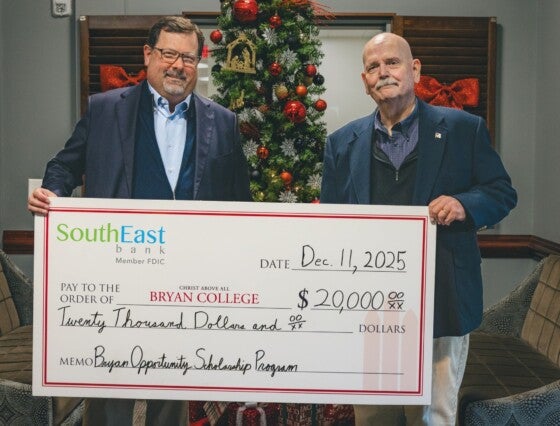Recent Articles

SouthEast Bank donates $80,000 to local student-focused programs in honor of retiring lenders
SouthEast Bank’s $80,000 donation is part of its comprehensive commitment to reinvest into the communities it serves.

3 SouthEast Bank Scholars Reflect on Scholarships' Impact
Through the SouthEast Bank Scholars program, funds are given directly to colleges and universities to then be distributed to students who qualify for scholarships.

3 Scams to Watch Out For in the Final Days of 2025
Fraudsters are getting creative, using this busy time of year as a way to sneak in with the abundance of...

The End of the Penny and What It Means for Tennessee Families and Businesses
After 232 years, the penny is no longer being produced by the United States Mint.

SouthEast Bank selects Brian Hood as Cleveland City President
Hood's well-rounded perspective and deep understanding of customer and team needs benefit SouthEast Bank in new role.

6 Ways to Refresh Your Finances in Time for 2026
Wow, you tackled a lot this year! As 2026 approaches, be sure to take stock of all of the financial wins you...

Good to Know: Daniel Elrod, Cleveland Branch Manager
Next time you visit our Cleveland location, be sure to local native and returning SouthEast Bank team member, Daniel Elrod.

6 Ways to Boost Your Holiday Shopping Budget
Staying vigilant about your spending can help you stay ahead of the stress and enjoy more worry-free time with your loved ones.

SouthEast Bank selects Mitch Noble as its senior credit officer
Noble brings a wealth of knowledge in commercial lending and a deep commitment to serving the East Tennessee community.

